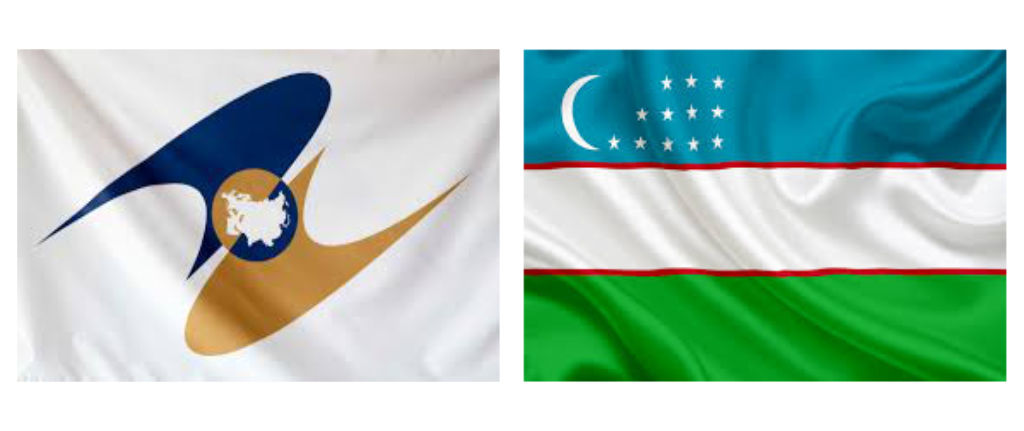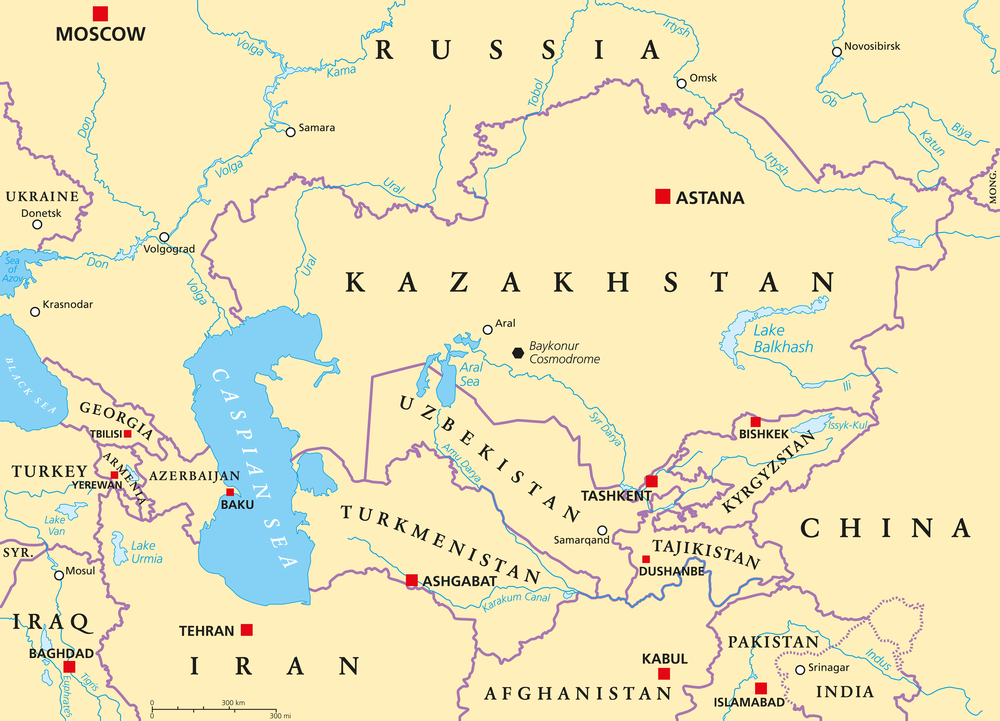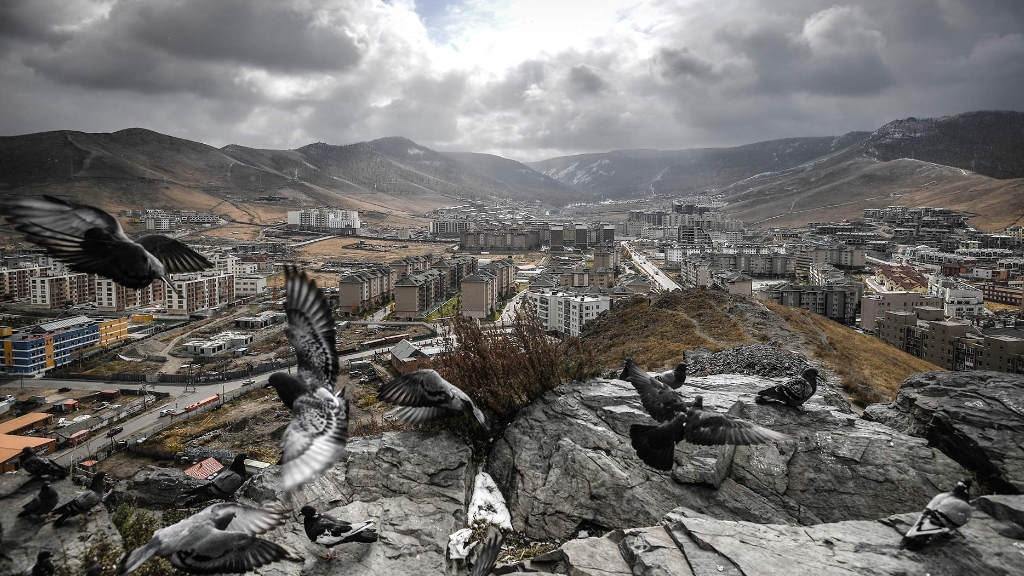
The tenth anniversary meetings of the founding of the Eurasian Economic Union (EAEU) took place last week, with the five member bloc assessing progress and planning ahead. The EAEU, which includes Armenia, Belarus, Kazakhstan, Kyrgyzstan, and Russia, fills the geographic space between Eastern Europe and Western China. Uzbekistan is not a member but does have Observer status and participated in last week’s meetings.
A leading issue is Uzbekistan’s continuing and future participation in the EAEU. Uzbekistan is a doubly landlocked nation, bordering Kazakhstan, Kyrgyzstan, Tajikistan, Afghanistan, and Turkmenistan. Due to its unique position, cross-border supply chains to these and their neighbouring countries are a significant issue for Tashkent. Regional disruptions could significantly damage its economy.

EAEU Uzbekistan Trade
The EAEU is the leading trade partner of Uzbekistan. Trade between Uzbekistan and the EAEU in January-February 2024 alone amounted to US$2.5 billion. Of this, exports accounted for US$747 million, and imports amounted to US$1.8 billion. This indicates a potential 2024 Uzbek-EAEU trade turnover of about US$14.5 billion. The EAEU’s share of Uzbekistan’s foreign trade accounts for 32.9%, of Uzbekistan’s total, with EAEU exports accounting for 29.9%, and imports from Uzbekistan at 34.6%.
The role of Tashkent in the EAEU today is difficult to overestimate. Uzbekistan covers almost half of the EAEU’s need for fruits and vegetables, thereby providing significant guarantees in EAEU food security. The Uzbek agricultural sector has consequently received EAEU privileges. The Agroexpress and logistics complex for agricultural products at Jizzakh, in central Uzbekistan, was launched by the Russian investors, and has opened up broad trade prospects.
Uzbekistan is also actively promoting products from its textile, automotive, and electrical industries to the EAEU. In the opposite direction there are powerful flows of metal products, petroleum products, wood, machinery and equipment, chemicals, cereals, and vegetable oils.
For example, Belarusian goods such dairy products, refrigerators and clothing are in demand in Uzbekistan, while Kazakh flour, confectionery, sweets and chocolate, Kyrgyz textiles and other consumer goods all have significant Uzbek market share. Russia provides supplies of electricity, gas and irrigation water for cotton plantations.
Political Background
Vladimir Berezovsky, of the Caspian-Eurasia Centre provides some background to Uzbekistan’s engagement with the EAEU: “The history of Uzbekistan’s entry into the EAEU was quite dramatic. The previous Uzbek President Islam Karimov had adhered to an isolationist course, closing his sales market to foreign products, thereby giving Uzbeki industry a competitive domestic edge. However, the lack of free trade also posed an often insurmountable barrier. Only from 2005, following riots in Andijan and Western imposed sanctions, did Karimov move towards his closest neighbours and sought closer relations with neighbouring countries. In 2008, the US company Chevrolet began an automobile plant in Asaka, while Washington at the same time began to disrupt Uzbekistan’s relations with its eastern neighbours. That resulted in Karimov cutting off gas and electricity supplies to Kyrgyzstan and Tajikistan. Relations with Russia also deteriorated, to the extent that still, in 2024, no Russian bank operates in Uzbekistan.
This situation changed with a change of leadership in Uzbekistan and the coming to power of Shavkat Mirziyoyev in 2016. At that point, Uzbekistan began to reestablish ties with Russia and with the leaders of its neighbouring Central Asian countries.”
This means that Uzbekistan has moved away from an isolationist policy and has recognised the need to embrace regional infrastructure and redevelop Eurasian supply chains.
Uzbekistan-EAEU Initiatives
For example, Mirziyoyev has invited the EAEU to join the construction of the Uzbekistan-Afghanistan-Pakistan railway, which will provide landlocked Uzbekistan seaport access at Gwadar. This project is partially being financed by China as part of its Belt & Road Initiative.
Mirziyoyev has also spoken in favour of joint scientific and applied research and the introduction of innovations, encouraging the development of cooperative ties in agribusiness. He put forward an initiative to hold an agricultural forum in the EAEU plus format in October 2024. Thus, Uzbekistan is consistently increasing the level of its participation in the EAEU and has moved beyond the official status of an ordinary observer. This is a logical step: the EAEU helps with the modernisation of economies, the creation of modern industries, the achievement of real sovereignty and, ultimately, improving the well-being of citizens.
European Union Issues
In Uzbekistan, however, there are still political elements that strongly oppose close ties with the EAEU and push a Western based agenda from their Embassies. In particular, there remains strong Western opposition to Tashkent becoming a full member of the EAEU. The EU for example has tried to deflect this by providing Uzbekistan with a General System of Preferences (GSP+) trade arrangement, which removes tariffs on two thirds (6,200 titles) of the product lines covered by GSP.
But should Uzbek producers join the EAEU, they would receive equal access to the market of the EAEU countries, while the lives of their significant migrant labourers would be much easier – a market that is closed off in the EU. Uzbekistan’s migrant labour force is principally deployed in Russia and accounts for a significant share of Uzbekistan’s economy. According to World Bank figures, Uzbek labor migrants sent home US$16.7 billion in remittances in 2022, an amount equivalent to 21% of national GDP.
Improved infrastructure routes to Russian and Chinese investment resources and technologies would also open. Uzbekistan would become part of a single customs space, as a central EAEU hub – between the EU and China and with increasing trade ties to the Middle East – significant potential investors.
The future of Uzbekistan therefore revolves around maintaining trade ties with the European Union if at all possible, while securing supply chains within its own regional Eurasian space. Key here for Tashkent is the Russian experience. Should the EU seek to punish Tashkent for pursing closer ties with Moscow – including an EAEU membership – and cancel or reduce the GSP+ agreement, then Uzbekistan will need to be sure it can find replacement markets within the EAEU. That could be summed up as “Uzbekistan’s Pivot to Eurasia” and is the most pressing issue as concerns Uzbekistan’s future today.
Further Reading
Russia – Uzbekistan 2024 Trade & Development
Russia’s trade and development dynamics with Uzbekistan are comprehensively featured in our 2024 Russia’s Pivot to Asia guide, which is a complimentary download and can be accessed in English here and in Russian here.




